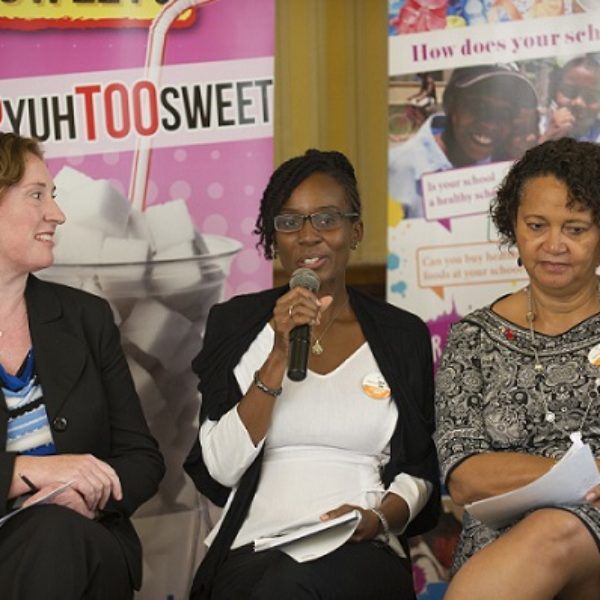Welcome back to our gardening and health blog series where we’ve been taking you on a personal journey as we explore the health and wellbeing benefits of gardening for ourselves.
Today, Abi Begho is back and this time she’s sharing her experience of growing tomatoes. She discusses the ups and downs, the need for patience and the joy of harvesting your first fruits.
We absolutely love tomatoes in my house. We eat them almost every day – in salads, we make Nigerian stew with them, we use them in omelettes, stir fries, sandwiches and much more. You name the dish and we’ll put a tomato in it!
When it came to deciding what to grow in our vegetable garden, tomatoes were first on our list and the first thing we tried.
When I started looking into tomatoes, I must be honest, I soon realised I really didn’t know a thing about them even though I eat them every day.
I was shocked at the variety of tomatoes out there, I was just aware of cherry, plum and what I call “normal” tomatoes, but this is just the tip of the ice berg. I was shocked to learn that there are over 700 varieties of tomatoes, they come in quite a few colours, not just red – yellow, orange, pink, purple and black, and they have some very interesting names – Beefsteak, Big Boy, Pink Brandywine, Pink Girl, Lemon Boy, Golden Jubliee and Better Boy.
Deciding what variety to grow
When it came to deciding which tomato variety to grow, because there were so many to choose from, I decided the best thing to do would be to extract the seeds from a local variety that we buy in our super market all the time. This means that I have no idea what variety it is (as it’s not listed on the package), but I knew it tasted nice and as it’s grown locally then that suggested to me that it would grow well in our garden (I hoped!).
Although this is how I selected which tomato variety to grow, the advice from experts is to base your decision on more scientific factors – how disease resistant a variety is, how it grows (is it determinate or indeterminate) and the time it takes to mature.
From Seed to Fruit
Once I had decided on what tomatoes to grow, then it was planting time.
In my last blog I explained that I simply sliced up a tomato making sure each of the slices had seeds in them, buried the slices in soil and watered them and in less than a week my seeds had germinated and I had about ten seedlings growing happily in my container. I was so excited and just couldn’t wait to see the seedlings develop.
I kept an eye on the seedlings and watered them regularly and one week later their true leaves (second set of leaves) had developed, a sign that the seedlings were developing well. At this point I pretty much left them alone, under a tree that got a lot of sunlight (but protected them from the intense afternoon sun here in St Kitts) and watered them regularly.
When they had outgrown the container, I put some of the young tomato plants in a large pot and the others I planted into my newly created vegetable bed. Then came the test of patience. One thing gardening teaches you is patience. Every morning I would go out into the garden and will them to grow, I was so excited every time I saw them develop just a little bit more, it was fascinating.
Two months after planting my tomato seeds I noticed flower buds developing (the very first sign that tomatoes are coming soon) and a few days after that a lovely yellow tomato flower had developed. I thought: ‘yes! I’ll have tomatoes in a couple of weeks.’ What did I say about patience? There was more waiting. It took another 6 weeks to get my first ripe tomato and as I type I have 51 green tomatoes growing nicely and waiting to ripen ( ah-mazing!)
Check out the video below to see me picking my second ripe tomato.


Challenges
The four main challenges I have encountered thus far are:
Insects – Living in the Caribbean means there are a lot of bugs and insects to contend with and they all seem to love tomatoes as much as I do! To date, they haven’t caused any major problems, but I did lose two tomatoes to caterpillars who ate them for lunch one day. I was so sad, it felt like all my hard work had gone to waste, at least it was only two tomatoes . I’ve been keeping an eye out for tomato-eating insects and have flicked a few caterpillars off the plants before they made a meal of the tomatoes.
Blossom End Rot – I woke up one morning shocked to see two of my tomatoes with dark patches on their bottoms, like they were rotting. I promptly discarded them hoping that they wouldn’t affect the tomatoes next to them. Then, a few days later, the same thing happened to two more tomatoes on the same plant but in a different location. I was dejected, first insects now some horrible looking disease. After a Google search I learnt that is was blossom end rot and not as bad as it looked.
Blossom end rot occurs due to a calcium deficiency where the plant, for various reasons, is unable to absorb enough calcium for its development. The advice from Gardening Know How is not to worry, it usually clears up on its own, just pick off the affected tomatoes and discard them and make sure the plants get adequate water (not too much though). So, for the moment I am going to just wait it out and see what happens. I’ll keep you posted.
Blossom drop – Last week I noticed that my new tomato flowers weren’t looking healthy at all. They seem drier than the previous set which really thrived and developed into 51 healthy tomatoes. These new tomato flowers are shrivelling up and some have already fallen off the plant without developing into fruit (Nooooo!). I couldn’t believe it. I had so many new flowers which I had hoped would form tomatoes, but alas, it was not meant to be. I hope the next set do better.
After doing some research, I found that blossom drop is common and looking at all the possible causes I have narrowed it down to two which I think could be the culprit:
- Lack of water – we’ve had some short sharp showers and so I haven’t been watering the plants as regularly as I used to. Reflecting on this I don’t think the showers were providing enough water for my plants as the soil has been pretty dry so I am going to start watering every other day as before
- Too many blossoms and fruit – up until now my plants have been developing really well and I do currently have 51 tomatoes spread across 9 plants and a lot of flowers developing (and dying!). According to The Spruce having all these fruit and flowers developing at the same time requires a lot of energy and they will all be competing for a limited amount of energy and food, and only the strong will survive. They state that once the majority of tomatoes have been harvested the problem will resolve, so again, I just have to wait it out.
Playing the waiting game – In this blog, I have mentioned patience and waiting several times and that has been one of my biggest challenges: waiting for something significant to happen. In the whole scheme of things it hasn’t been that long (3 months) to get my first ripe tomato, but at times it has felt like a life-time. Each step does take a while – it took two months from seed to the first sign of a blossom, then from flower to pea-sized tomato took a week, that got me excited, but then it took over a month for that pea-sized tomato to develop into a fully ripened red tomato, but it was so worth the wait – it was delicious!
Why grow tomatoes?
Tomatoes are a great fruit to grow because they are packed with nutrients. They are known for their fairly high lycopene content which has been linked to a reduction in our risk of developing heart disease and cancer. Tomatoes are also rich in vitamin C, folate, vitamin K and fibre, and they contain iron, potassium, vitamin A and vitamin E.
All these nutrients and minerals are excellent for your overall health and by growing tomatoes in your garden you’ll get an ample supply so you’ll get a good dose of nutrients.
Happy gardening!
Well….that was a fairly long blog post (sorry!), but I hope that it gave you an idea of what it’s like to grow tomatoes and some of the challenges you may encounter along the way. Despite the challenges, it has been a lot of fun and very rewarding. I am looking forwarding to harvesting more tomatoes, so far I have only harvested two so there are many more to come. I’ll keep you all updated.
In my next blog I will move on to my okras – the stars of the show!
See you next time and happy gardening!
Some references and more information
- Identifying Tomatoes with Blossom End Rot
- How to prevent blossom end rot
- What kind of tomatoes should I grow
- Controlling Blossom Drop
If you missed our previous blogs you can read them using the links below
- Improving Our Health and Wellbeing Through Gardening: An Introduction
- Improving Our Health and Wellbeing Through Gardening: How I Got Started















